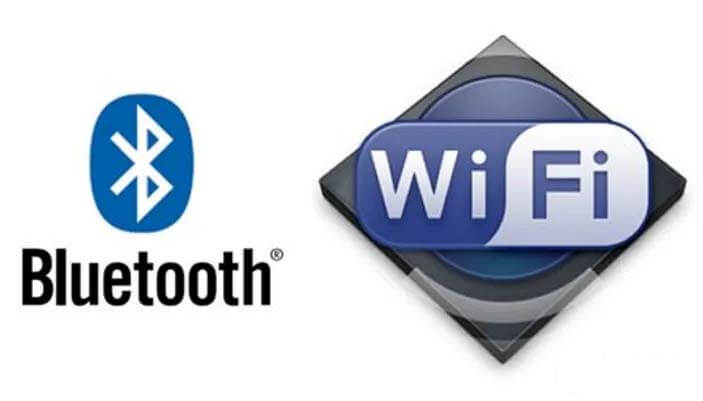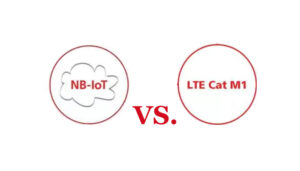Usually, we talk about 2.4 GHz Wifi Bluetooth and Zigbee is a wireless data transmission technology, they have their own characteristics. 2.4 GHz and 5 GHz refer to their operating frequency band. What is the relationship between 2.4 GHz Wifi Bluetooth, and what are 2.4 GHz Wifi Bluetooth’s advantages and disadvantages?
What is Bluetooth in the 2.4 GHz Wifi Bluetooth?
Bluetooth is a new wireless communication technology that enables the exchange of data between personal networks and mobile devices over short distances, and Bluetooth communication technology is in fact a global standard.
It breaks the limitations of using wired cables to connect various digital devices, Bluetooth works mainly in the 2.4GHz ISM band, which is why Bluetooth is the standard for global wireless communication technology.
Bluetooth since version 4.0 is divided into “Classic Bluetooth”, “Low Power BLE Bluetooth” and “High-Speed Bluetooth”, Classic Bluetooth includes the old transmission protocol to support video and audio transmission.
Low Power (BLE) Bluetooth is a subset of version 4.0, compared to the classic Bluetooth a new protocol stack can be fast and simple to connect, it is mainly facing the power consumption needs of the extreme, with small coin cell power applications. So low-power Bluetooth is very suitable for the needs of IoT applications.
What is WIFI in the 2.4 GHz Wifi Bluetooth?
The full name of WIFI is Wireless Fidelity, also known as 802.11b standard, its biggest advantage is that it allows electronic devices to connect to a local area network and high transmission speed.
It usually uses the 2.4G UHF ISM video band, and the connection to the network is usually password protected and can be easily cracked by technical means.
So WIFI in terms of security performance or need to continue to improve, WIFI communication technology is actually the wired network signal into a wireless signal, the use of wireless routers to provide signal technical support so that cell phones, tablets, computers to connect to the Internet.
Bluetooth and WIFI both belong to the wireless communication network standard.
They are similar in that they both work in the ISM 2.4GHz public frequency band.
The difference is that Bluetooth uses the FHSS (Frequency Hopping Spread Spectrum) method, which generally jumps 1600 times per second, dividing the 83.5MHz band into 79 band channels, with each moment occupying only 1MHz of bandwidth.
The modulation method is GFSK (Gaussian Frequency Shift Keying), which can carry out wireless communication of data and voice at the same time, the communication distance is generally 10 meters, the latest version of Bluetooth 4.0 can reach 50 meters.
Now all kinds of digital products can basically integrate Bluetooth functions, such as cell phones, headphones, printers, keyboards, cameras, etc., the use of a wide range.
Wifi uses the IEEE802.11b LAN protocol, which has a transmission range of 100 meters and a maximum speed of 11Mbps, using DSSS (Direct Sequence Spread Spectrum) and QPSK or BPSK (Phase Shift Keying) with a bandwidth of 22MHz.
Wifi mainly provides wireless Internet service, so it can often be seen in devices that need wireless mobile Internet access, such as laptops, PDAs, smartphones, etc.
Bluetooth communication is part of WPAN wireless personal area network, i.e. point-to-point, multipoint-to-multipoint, mainly used to connect some external devices, or in close proximity to data transmission.
For example, Bluetooth headsets, cell phones, and tablet computers transfer files. The bandwidth of Bluetooth transmission is 1Mbps, and the effective distance of transmission is theoretically about 100M.
WIFI is a network mode that belongs to WLAN wireless local area network and supports simultaneous transmission of multiple terminal devices. At present, the more mainstream wireless products protocols are 802.11b (11b for short), 802.11a (11a for short), and 802.11g (11g for short) which are standard protocols.
Wifi 802.11b uses the 2.4GHz band with a maximum bandwidth of 11Mbps. Wifi 802.11a uses the 5.8 GHz band with a maximum transmission bandwidth of 54Mbps.
Wifi 802.11g can also use a 2.4GHz band, the maximum transmission bandwidth is 54Mbps in normal working mode, and usually 108Mbps in super G working mode.
What is the difference between 2.4G and Bluetooth?
2.4GHz wireless technology, which is a short-range wireless transmission technology, two-way propagation, strong anti-interference, long transmission distance (short-range wireless technology range), the advantages of low power consumption, and 2.4G technology can reach the computer at a distance of 10 meters.
Bluetooth technology, is a wireless transmission protocol based on 2.4 GHz technology, due to the use of different protocols, there is a difference between the other 2.4 GHz technology which is called Bluetooth technology.
In fact, Bluetooth and 2.4G wireless technology are two different terms. But there is no difference between the two in terms of frequency, both are 2.4 GHz bands.
The note is a 2.4 GHz band and not that is 2.4 GHz, in fact, the Bluetooth standard is from 2.402-2.480 GHz in these bands. 2.4G products must be equipped with a receiver, now 2.4GHz wireless mice are equipped with a nano receiver.
And Bluetooth mouse is no receiver, just share any product with Bluetooth function to achieve the connection operation.
The most important thing is, that the 2.4 GHz wireless mouse receiver, can only be a pair of one working mode; while the Bluetooth module can achieve a pair of many working modes.
Advantages and disadvantages, 2.4 GHz technology products are connected quickly, Bluetooth technology products need to be paired, but 2.4 GHz technology products must be more than one USB interface, there are others and so on each has advantages and disadvantages.
At present, the use of Bluetooth technology products are mainly for Bluetooth headsets, Bluetooth audio, etc. 2.4 GHz technology products are mainly for wireless keyboards and mice, etc.
What is the difference between Bluetooth and WIFI?
Bluetooth and WIFI both belong to the wireless communication network standard. They are the same in that they both work in the ISM 2.4GHz public band.
The difference is that Bluetooth uses the FHSS (frequency hopping spread spectrum) method, which generally jumps 1600 times per second, dividing the 83.5MHz band into 79 band channels, each moment occupying only 1MHz of bandwidth. The communication distance is generally 10 meters, the new version of Bluetooth 4.0 can reach 50 meters transmission distance.
The protocol used in wifi is IEEE802.11b LAN protocol, which has a transmission range of 100 meters and a maximum speed of 11Mbps, using DSSS (Direct Sequence Spread Spectrum) and QPSK or BPSK (Phase Shift Keying), with a bandwidth of 22MHz.
Bluetooth belongs to WPAN wireless LAN, i.e. point to point. And wifi belongs to WLAN wireless LAN, a network mode where multiple terminals transmit at the same time.
Whether it is 2.4 GHz Wifi Bluetooth, or Zigbee, as their technology keeps developing, they are more and more widely used in our life and bring more and more convenience to human beings.
The development of any one technology is inseparable from the support of the corresponding electronic components, in this wireless technology quartz crystal also plays an important role.
In the 2.4GHz technology products, commonly used quartz crystal frequency 12.000MHZ and 16.000MHZ, and so on.
In Bluetooth technology products, the commonly used quartz crystal frequencies are 12.000MHZ, 16.000MHZ, 24.000MHZ, 26.000MHZ, 32.000MHZ, etc.
In WIFI technology products, the commonly used quartz crystal frequency is 20.000MHZ, 40.000MHZ, etc.
What is the 2.4 GHz Wifi Bluetooth, and Zigbee principle?
2.4 GHz Wifi Bluetooth, and ZigBee protocols, in principle, all transmit data by modulating data into electromagnetic wave signals and then demodulating the received electromagnetic waves at the other end to achieve wireless data transmission.
Only the different protocols have some differences in the supported electromagnetic wave frequencies, but they can all work on the 2.4GHz ISM (Industrial Scientific Medical Band) frequency band.
So in terms of RF performance, it will be physically limited by the 2.4G signal. For example, at the same power, the diffraction performance will not be able to compare with the lower frequency electromagnetic wave, such as 433 MHz.
So in the application, if the pursue of longer communication distance, you should use a slightly lower frequency wireless module. If there is a requirement for transmission rate, only then should you choose 2.4G or even 5.8GHz products.
Because the physical level is working at 2.4GHz, in theory, you can use a 2.4GHz RF chip with a high degree of openness to develop the protocol stack of these three protocols by yourself. But this workload is very large, the protocol is very complex, professional things to professional people, this article will not repeat. Our purpose is mainly concerned with how to choose.
WIFI application of 2.4 GHz Wifi Bluetooth
Mainly used in high transmission rate occasions, such as mobile devices connected to the Internet, surveillance cameras, etc. Wifi Mesh is currently used less, mainly because the cost is higher than Bluetooth mesh.
Bluetooth application of 2.4 GHz Wifi Bluetooth
Since the release of the Bluetooth 4.0 BLE protocol, the power consumption of Bluetooth has been greatly reduced, and the use of experience has increased significantly, so the application is very wide in the past two years. Plus the release of BLE Mesh, low power consumption, and low-cost features, there is a trend to replace ZigBee.
Zigbee application of 2.4 GHz Wifi Bluetooth
Zigbee is mainly used in industrial applications of networking. The cost is higher, but the anti-interference performance is strong, the network is stable, and the delay is low.
Besides the What is the 2.4 GHz Wifi Bluetooth article, you may also be interested in the below articles.
PCB Antenna VS. External Antenna
Ceramic Antenna VS. PCB Antenna, A Comparison Guide
Wifi vs. 5G, is 5G better than Wifi?
Mobile Networks’ Evolution From 1G To 5G




